Do you experience pain or bleeding when passing a bowel movement? Or a burning sensation that can last for quite some time? If you answered yes, you might be suffering from an anal fissure. The chances of developing anal fissures decrease with age, especially after 651. However, it is a common problem in children younger than a year as well. Adults may develop anal fissures mainly due to constipation or loose stools. They can affect both men and women, and are particularly common in women after childbirth. Many anal fissures improve on their own without treatment2. But if you feel you may have fissures that are not resolving or are giving you a lot of trouble, reach out to your healthcare provider to get the necessary diagnosis and treatment. You can follow simple home remedies listed below to relieve the symptoms of a fissure and use them for anal fissure self-care.
Anal fissures are a common condition, and doctors can often help manage them with medications and advice. If you experience anal fissure symptoms, don’t delay seeking medical care due to embarrassment, as timely treatment can ease discomfort and support healing.
An anal fissure is a crack or a tear in the lining of the anus, the last portion of the large intestine. Constipation is the most common cause of anal fissure, as the passage of a large or hard stool can tear the anal lining2.
Other causes of an anal fissure include
If you have an anal fissure, you might experience
Symptoms of anal fissures may be similar to those of haemorrhoids, fistula or colo-rectal cancer and, hence, it is crucial to consult a surgeon/proctologist for prompt diagnosis and treatment upon noticing such symptoms. Each condition requires a different treatment approach and relying on home remedies without knowing the diagnosis can worsen the condition.
Dr. Arpit Verma, MBBS MD (Pharmacology)
The remedies mentioned below may help relieve constipation, which will allow the fissure to heal and avoid worsening the condition by eliminating excessive pressure on the area4. Home remedies for fissures include the following.

Regular exercise is an effective self-help tip to manage constipation. You can become more physically active by going out for a walk, yoga, or swimming5. According to WHO6, adults should aim for at least 150 minutes of physical exercise every week and children aged between 5 and 17 years should aim for at least 60 minutes of physical exercise every day.

You should drink plenty of water to help avoid dehydration. Drinking more water will help soften the stool and relieve constipation. This will help alleviate the pain and muscle spasms around the anal region by reducing the pressure on that area4. Try to drink at least eight to 10 glasses of water every day7.
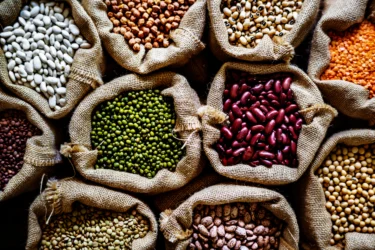
Constipation is the leading cause of anal fissures in adults. You can increase your daily fibre intake to soften the stool and relieve constipation. Eating foods rich in fibre, such as fruits, legumes, vegetables, and whole grains can ease constipation, reduce strain during bowel movements, and support fissure healing4. Adults should consume 25-30 grams of fibre every day8.
Here are examples of foods with high fibre content.

Sitz bath is a warm water soak that helps repair a wound and clean the area. Taking regular Sitz baths can help provide relief from anal fissures. A Sitz bath should be taken with warm water for at least 15 minutes two to three times a day, with only the hips and buttocks submerged in the water2. You can use a bathtub or a Sitz bath kit.

Petroleum jelly is easily available and has a wide range of uses. Applying it on the anal fissure may help soothe irritation in the anal area and provide temporary relief2. It can be used several times a day as needed.
Also Read: Difference between Piles vs Fissure
Don’t let embarrassment or shame stop you from getting the necessary medical help for an anal fissure. A doctor can guide you on self-care measures and provide treatment to relieve your symptoms and reduce the chances of the fissure coming back.
Also Read: Natural Laxatives: Your Guide to Safe and Effective Remedies for Constipation
Anal fissures are painful tears in the anal lining that may bleed when passing stools. Fissure is a common problem, especially in children, although adults can also develop an anal fissure due to constipation. Anal fissures can be uncomfortable, but lifestyle changes and simple self-care measures may help ease the symptoms. Drinking plenty of water and eating high-fibre diet can ease constipation, giving fissures a chance to heal on their own2. If you suspect you have an anal fissure, it is important to seek medical advice and treatment.
Doctors deal with such cases regularly, so there is no need to feel embarrassed about asking for help.
Some remedies that you can follow at home to relieve anal fissures are increasing your fibre and fluid intake, regular exercise, and taking Sitz baths. High fibre intake, increasing hydration and exercising regularly may help you relieve constipation and give the fissure some time to heal on its own. Taking a Sitz bath 2 to 3 times a day will clean the fissure and promote its healing.
Anal fissures, in most cases, usually don’t lead to any serious diseases. However, in some cases, they might lead to an anal fistula (a tunnel is formed between the bowel and the skin near the anal opening), chronic anal fissure (formation of scar tissue at the fissure site) or anal stenosis (anal canal becomes narrowed). It can also lead to submucous abscess or intersphincteric abscess.
Most cases of anal fissures arise due to chronic constipation. The chances of anal fissure may be reduced by eating a lot of fibre, drinking more water and exercising regularly to relieve constipation and improve digestion. Wiping gently every time you use the toilet is also a good practice that can help you avoid anal fissures.
If you notice blood when passing a bowel movement, you should contact your healthcare provider. Also, if the bleeding is accompanied by pain, you need to get medical help and get the necessary diagnosis.
Yes, some anal fissures may heal on their own if you are able to avoid constipation and with proper self-care. Constipation, if not managed, can hinder the healing of fissures because the pressure from the bowel movement constantly damages the fissure site.
Yes, individuals with a previous history of anal fissure are prone to developing it again.
Disclaimer: The information provided here is for educational/awareness purposes only and is not intended to be a substitute for medical treatment by a healthcare professional and should not be relied upon to diagnose or treat any medical condition. The reader should consult a registered medical practitioner to determine the appropriateness of the information and before consuming any medication. PharmEasy does not provide any guarantee or warranty (express or implied) regarding the accuracy, adequacy, completeness, legality, reliability or usefulness of the information; and disclaims any liability arising thereof.
Links and product recommendations in the information provided here are advertisements of third-party products available on the website. PharmEasy does not make any representation on the accuracy or suitability of such products/services. Advertisements do not influence the editorial decisions or content. The information in this blog is subject to change without notice. The authors and administrators reserve the right to modify, add, or remove content without notification. It is your responsibility to review this disclaimer regularly for any changes.
Many of us today have skincare goals that might be lightening dark spots or circles, preventing acne breakouts, wrinkled skin, or obtaining flawless clear skin. There are various lotions, creams, serums, and other products on the market to help achieve this skincare goal. However, it takes more than just these products to obtain clear, healthy skin. Simple lifestyle measures like eating the right foods, getting an ample amount of sleep and quitting smoking can help in the process of obtaining clear skin1.
Some skin issues that lead to dark spots on your face or sometimes result in scars include2:
The following remedies can be used to relieve acne and promote healthy, clear skin:
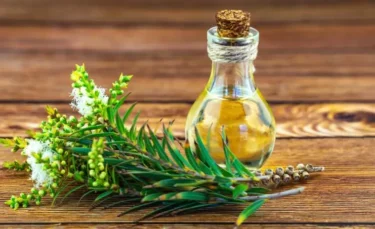
Tea tree oil is an essential oil that is known to be effective against acne, thereby helping promote clear skin. It also helps in faster wound healing9. To use tea tree oil, you first need to dilute it with some carrier oil, for example, olive, coconut or almond oil and apply it to the skin. Also, avoid using tea tree oil if you are allergic to it. You can do an allergy test by first applying it to a small area.
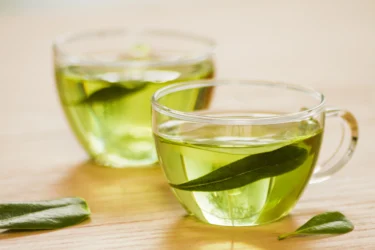
The extracts of green tea are helpful in the management of acne, thus helping in achieving clear skin. According to studies10, skin lotions containing green tea extracts proved to be efficient in the management of acne. You can make a green tea face mask using honey, green tea and baking soda. Mix these ingredients to make a paste. You can apply this paste as a face mask to get clear skin.

This herb can be used to manage acne, resulting in clear skin. Moreover, it helps soothe skin and clean up outbreaks. Aloe vera also helps to deal with inflammatory conditions like boils and cysts11. You can apply aloe vera gel directly on your face by massaging gently. Aloe vera gel can be added to your homemade face masks and face packs as well.

Rosewater is helpful in the management of acne and blackheads, thereby helping to attain clear skin12. To use rosewater, take some in your palms and massage gently on the face. You can also use cotton to gently dab the rose water on the skin.

This herb is used to produce a great wash for a variety of skin issues, including worst cases of acne, thereby helping improve skin health and helping to obtain clear skin. To make walnuts a part of your skincare routine, you can use a walnut face mask and face scrubs. To make the walnut face mask, mix honey, besan (gram flour) and ground walnuts together to make a smooth paste. Apply this paste to the face as a face mask. To make walnut scrub, ground some walnuts and add some olive oil. Apply this scrub by gently massaging it on your skin.
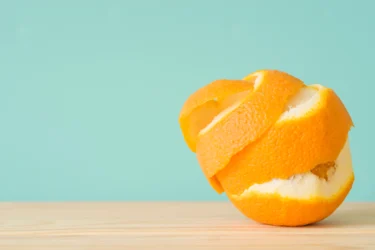
The juice and milk paste obtained from the orange peel is known to be effective in the management of acne. Therefore, it helps in promoting clear skin13. You can use orange peel powder to make face packs. Mix orange peel powder and yoghurt to make a paste. You can apply this orange peel and yoghurt face pack for clear and healthy skin.
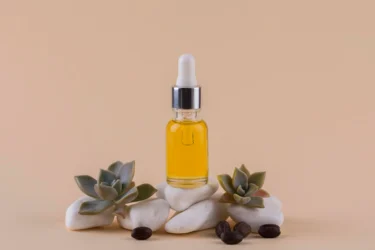
This essential oil has been used for dealing with acne and psoriasis, thereby resulting in clear skin14. Jojoba oil can be applied directly to the skin as a serum. But before using the oil, make sure you are not allergic to it by doing a patch test first. You can also put jojoba oil in other face packs to get clear and healthy skin.
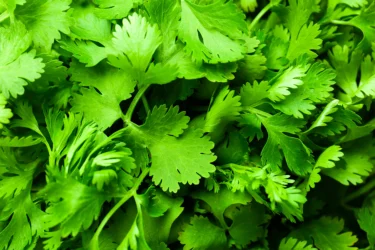
The oil of coriander has antibacterial and antifungal properties. Thus, it is helpful in managing acne, which in turn helps promote healthy and clear skin15. You can use freshly ground coriander leaves by mixing them with aloe vera gel. Apply it evenly on the face and massage gently for clearer skin.

The extracts obtained from lavender have been used to deal with acne and help obtain clear skin16. Lavender oil can be applied to the skin after mixing it with carrier oils like olive or coconut oil. Gently massage this mixture on the face to get clear skin. You can also use a cotton ball to gently dab it on the skin.
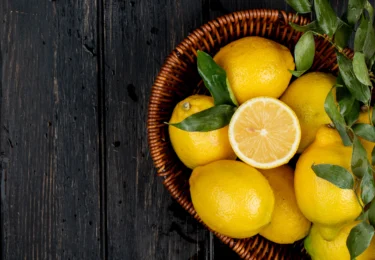
This fruit has been used for various skin conditions like acne, warts, sunburns, and scars17. To use lemon juice, mix a small quantity with honey and apply it to the face. You can also put lemon juice in your face pack recipes. If you feel any irritation after using lemon juice, wash it immediately.
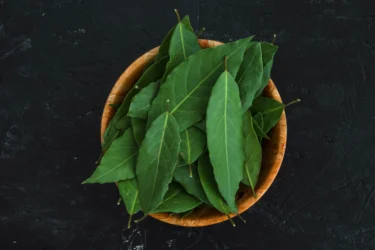
A few neem leaves can be taken and crushed to get a paste. This paste can be applied on the face where there is acne to get clear skin18. Making a neem face pack is easy. Start by boiling some neem leaves and orange peels. When they become soft, take them out. Grind them to make a smooth paste. Apply this paste to get clear skin.
At times, a poor diet that includes carbohydrates and sugars can lead to inflammation (swelling), redness, puffiness, and breakouts. To obtain glowing, clear skin, you can change to a diet that includes vegetables, fruits, seeds, nuts, and fish. A diet comprising tomatoes, spinach, salmon, and avocados contains various minerals and vitamins that help boost your skin health.
Pro Tip: A consistent skin care routine is the key to healthy, glowing skin. You may explore the benefits of products like topical Niacinamide serum, mild cleansers and moisturisers that suit your skin. Consume a balanced diet, stay hydrated and don’t mess up with your sleep schedule.
Also Read: 20 Foods To Eat For A Healthy Skin!
It is essential to visit a dermatologist (skin and hair specialist) when:
Also Read: Wonderful Home Remedies for Skin Tightening
Having clear, flawless skin is a dream for everyone. Conditions like acne, folliculitis, sun allergy, melasma, heat rashes and sunburns can result in marks on the face. Several home remedies like green tea, tea tree oil, rose water, lemon, lavender, jojoba oil, coriander, walnut, orange peel and aloe vera can be used to manage acne and other skin conditions and obtain clear, flawless skin. However, it is important to visit a doctor if your condition doesn’t improve or if you are anxious and want clear, flawless skin.
Also Read: Natural Home Remedies for Hyperpigmentation
Walnut husks can be boiled with sufficient water, strained and then stored in a corked jug. It can then be used on the face to manage acne and obtain clear skin.
Orange peels can be taken and dried. The dried peels can be powdered and sieved. This powder can be combined with milk to obtain a paste. This paste can be applied to the face before going to bed at night. The peels of an orange or lemon can be put in a blender, and this juice can be used on the face to manage acne and obtain clear skin.
Rose petals can be dried and added to boiling water. This mixture is allowed to cool down and then can be consumed as a drink. It can also be used as a face wash or wet pack.
Poplar buds are used to manage acne, resulting in clear skin.
Disclaimer: The information provided here is for educational/awareness purposes only and is not intended to be a substitute for medical treatment by a healthcare professional and should not be relied upon to diagnose or treat any medical condition. The reader should consult a registered medical practitioner to determine the appropriateness of the information and before consuming any medication. PharmEasy does not provide any guarantee or warranty (express or implied) regarding the accuracy, adequacy, completeness, legality, reliability or usefulness of the information; and disclaims any liability arising thereof.
Sneezing is a sudden and uncontrollable burst of air that passes through the mouth and nose. Sneezing is caused by irritation of the mucous membrane of the nose and throat. Sneezing might be bothersome to people, but it is not a sign of anything serious1. Whenever sneezing, people cover their nose and mouth with a tissue to help prevent the spread of germs2. You can sneeze in response to many external triggers and allergies, and it is usually not a sign of anything serious1. Sneezing is manageable, and the remedies mentioned below might help in managing and preventing sneezing.
Sneezing can also be a symptom of hay fever or allergic rhinitis, but you need to consult with a healthcare professional or doctor to come up with a diagnosis3.
A lot of factors can trigger sneezing. These factors are:
Sneezing itself can be a symptom of health conditions like cold and allergic rhinitis (hay fever). Allergic rhinitis is a condition in which the body’s immune system recognises and over-reacts to environmental factors like dust, pet dander and pollen1,3.
Sneezing presents itself with:
It is advised to cover your mouth and nose whenever you sneeze to help prevent the spread of viruses and germs.
Home remedies often work for sneezing,but if the problem is persistent or if there is seasonal rhinitis accompanied with sneezing,a person should use medicated nasal sprays under the supervision of his physician (helps a lot in chronic sneezing)
Dr. Nikhil Yadav, MBBS MD,CCEBDM
Here are some home remedies that you can use to get rid of allergies that might be causing you to sneeze.
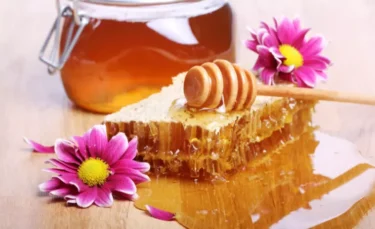
Eating honey might help with seasonal allergies that might be causing you to sneeze. However, there is a lack of sufficient information regarding honey providing benefits for sneezing. Also, you should avoid eating honey if you are allergic to pollen. Honey should not be used for children under one year of age5. To use honey, you can mix some honey in a glass of warm water and drink it. You can also make honey ginger tea to deal with sneezing.
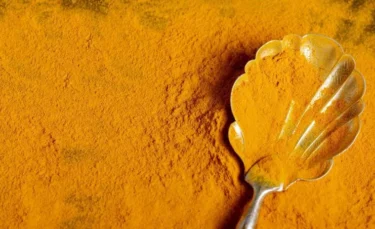
In a clinical trial, turmeric was found to be effective in providing relief from symptoms of allergic rhinitis like sneezing and nasal congestion. Turmeric is also effective in modulating immune reactions6. There are several ways in which you can use turmeric. You can take turmeric as a part of your daily diet by:

Black pepper is a natural immunomodulator that is capable of modifying immune responses. Black pepper might be beneficial for sneezing due to allergies and over-reaction of the immune system (allergic rhinitis)3,7. To use black pepper for allergies, you can make black pepper tea. To make the black pepper tea, you can use black pepper, dry ginger, basil and cardamom. Drink this warm black pepper tea a couple of times a day to get relief from the symptoms of allergy.

Ginger can help you deal with allergic rhinitis. To use ginger, you can combine the ginger powder with turmeric and Ashwagandha powder and mix it well. You can take this powder mixture along with milk to manage allergic rhinitis. Allergic rhinitis is one of the main causes of sneezing3.
Avoiding the exposure to the triggers that might be causing you the reactions is the best way to control the sneezing. You can control your sneezing in some ways that are given below.
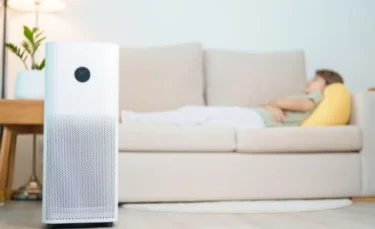
Using air filters will help you keep the air clean. It will also help to avoid exposure to any particles or triggers that might be causing you to sneeze1. Clean air will help you to manage and control sneezing.
I have witnessed patients experiencing relief from the symptoms of allergic rhinitis and sneezing through the simple yet powerful combination of wearing masks outdoors in addition to their prescribed medications. For some only regular use of masks while stepping out has proven to be helpful.
Dr. Arpit Verma, MBBS, MD (Pharmacology)

Washing the linens can get rid of all the dust and particles that might be causing you to sneeze. It will limit your exposure to indoor allergens. It is important to clean all the beddings and sheets properly to avoid contact with external triggers. Also, washing linens in water helps in killing the dust mites1.
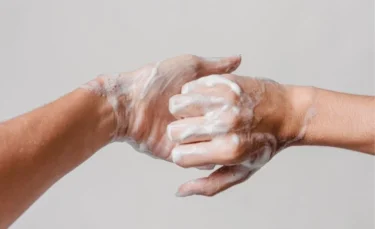
Pets might be carrying some animal dander (flakes of skin), which can cause an allergic reaction and sneezing. If you are allergic to pets, keeping pets out might help to avoid your exposure to allergens and pet dander. Also, you can follow this practice to further limit your contact:

You can manage your allergic symptoms by avoiding the triggers that might be present outdoors. If you are allergic to pollen, you should try to stay indoors as much as possible. Avoid hanging your clothing outside, as the pollen and dust might stick to them3.
Also Read: Natural Home Remedies For Chest Congestion
You need to contact your doctor or healthcare provider if your sneezing is affecting your day-to-day activities. Also, if the home remedies do not work out, you should contact your doctor1.
Also Read: Effective Home Remedies For Dry Throat
Sneezing is nothing but a sudden outburst of air which comes out of the nose and mouth. It can be a symptom of an allergic condition called allergic rhinitis or hay fever. Sneezing is the body’s response to expel the irritants from the nasal cavity. You must cover your nose and mouth with a tissue when sneezing. It is important to follow good hygiene habits to avoid the spread of germs. Limiting your exposure to the triggers that might be causing you to sneeze is the best way to get relief from it. For example, you can restrict your indoor and outdoor exposure to dust mites, pet dander and pollen to get relief from sneezing. You can also use honey and turmeric to get rid of sneezing.
If continuous sneezing affects your daily life and the home remedies are not working out, you should consult your healthcare provider.
Also Read: Home Remedies For Vomiting
If you want to get relief from sneezing, you should try limiting the exposure to the irritants that might be causing you to sneeze. Limiting exposure to dust, pollen and pet dander is the most effective remedy to get rid of sneezing. If you are allergic to some animals, make sure to wash your hands after petting them. You can also use ingredients like honey, black pepper and turmeric that can help in controlling sneezing. Honey might contain pollen, which can trigger sneezing in some people. If you are allergic to pollen, you should avoid using honey.
Allergic rhinitis is also called hay fever. It is a condition in which your immune system identifies and over-reacts to certain environmental factors like dust mites, pet dander and pollen. In response, it might cause symptoms like sneezing, itchy eyes, stuffy nose and fatigue. This is called allergic rhinitis3.
Sneezing can be a symptom of disease conditions like common cold and allergic rhinitis. Sneezing can also be triggered by external particles like dust, mould and pollen1,3.
Natural ingredients that you can use to get relief from sneezing are turmeric, honey and black pepper5,7. Honey should not be used for children below one year of age. Also, you should avoid using honey if you are allergic to pollen5.
You should contact your healthcare provider if your symptoms do not improve with home remedies and the sneezing is interfering with your daily activities1.
1. MedlinePlus [Internet]. Sneezing; 2022 Jan 6 [cited 2022 May 11]. Available from: https://medlineplus.gov/ency/article/003060.htm
2. ACAAI Public Website [Internet]. Hay Fever (Rhinitis); 2020 June 17 [cited 2022 May 11]. Available from: https://acaai.org/allergies/allergic-conditions/hay-fever/
3. Dhand R, Li J. Coughs and Sneezes: Their Role in Transmission of Respiratory Viral Infections, Including SARS-CoV-2. Am J Respir Crit Care Med [Internet]. 2020 Sep 1 [cited 2022 May 11];202(5):651-9. Available from: https://pubmed.ncbi.nlm.nih.gov/32543913/
4. National Center for Complementary and Integrative Health [Internet]. 6 Things To Know About Complementary Health Approaches for Seasonal Allergy Relief [cited 2022 May 11]. Available from: https://www.nccih.nih.gov/health/tips/things-to-know-about-complementary-health-approaches-for-seasonal-allergy-relief
5. Wu S, Xiao D. Effect of curcumin on nasal symptoms and airflow in patients with perennial allergic rhinitis. Ann Allergy Asthma Immunol [Internet]. 2016 Dec 1 [cited 2022 May 11];117(6):697-702.e1. Available from: https://pubmed.ncbi.nlm.nih.gov/27789120/
6. Majdalawieh AF, Carr RI. In Vitro Investigation of the Potential Immunomodulatory and Anti-Cancer Activities of Black Pepper (Piper nigrum) and Cardamom (Elettaria cardamomum). J Med Food [Internet]. 2010 Apr 22 [cited 2022 May 11];13(2):371-81. Available from: https://www.liebertpub.com/doi/full/10.1089/jmf.2009.1131
7. Ayush Division [Internet]. Ayurveda offering herbal healing [cited 2022 May 11]. Available from: https://agritech.tnau.ac.in/horticulture/pdf/Aayush_AyurvedaOffering_HerbalHealing.pdf
Disclaimer: The information provided here is for educational/awareness purposes only and is not intended to be a substitute for medical treatment by a healthcare professional and should not be relied upon to diagnose or treat any medical condition. The reader should consult a registered medical practitioner to determine the appropriateness of the information and before consuming any medication. PharmEasy does not provide any guarantee or warranty (express or implied) regarding the accuracy, adequacy, completeness, legality, reliability or usefulness of the information; and disclaims any liability arising thereof.
Links and product recommendations in the information provided here are advertisements of third-party products available on the website. PharmEasy does not make any representation on the accuracy or suitability of such products/services. Advertisements do not influence the editorial decisions or content. The information in this blog is subject to change without notice. The authors and administrators reserve the right to modify, add, or remove content without notification. It is your responsibility to review this disclaimer regularly for any changes.
Do you hesitate to talk to someone because of your bad breath? Are you searching for some home remedies to cure your bad breath? Then we welcome you to a blog, where you can get to know the causes and a few home remedies that will help you deal with your bad breath. Bad breath, also called halitosis, is mostly a sign of bad dental hygiene, dry mouth, or other mouth conditions. It can also be a sign of other conditions, such as diabetes and liver and kidney diseases1.
Following are some of the reasons for bad breath:
It is important to educate the patient about the need for good dental hygiene. While most people would associate bad dental hygiene and resulting halitosis with toothaches and unsightly stains, a major deterrent would be to emphasize the links between bad oral hygiene and serious medical issues like cardiovascular diseases, including myocardial infarction, stroke or endocarditis, which are precipitated by periodontitis, or periodontitis.
Dr. M.G. Kartheeka, MBBS, MD(Pediatrics)
Bad breath itself is a symptom of various conditions mentioned above. It may be worse in the morning or after drinking coffee, smoking, or eating food items like garlic2.
However, you may also notice some other symptoms like:
Some home remedies that might help you get rid of bad breath are:
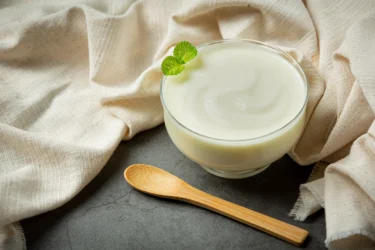
Yoghurt decreases the bacteria that produce bad/foul breath. In a human study, the results indicated that yoghurt might reduce harmful bacteria and oral malodour (unpleasant smell)4. Therefore, you may eat yoghurt to fight bad breath.
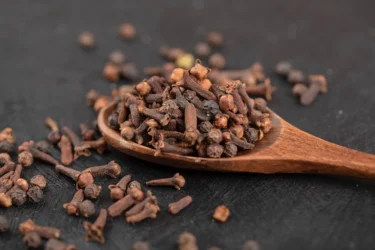
Chewing some lavang reduces bad breath. It inhibits the growth of microorganisms responsible for producing bad breath and helps fight bad breath5. You can chew some lavang to get rid of bad breath6.
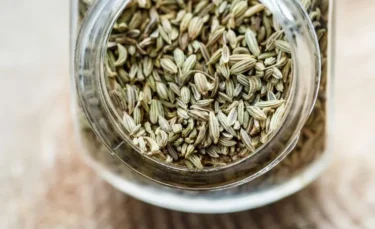
Fennel seeds are chewed by the people of India to deal with bad breath. It is considered beneficial for teeth and is known to clean teeth7.You can chew some fennel seeds. Also, you can gargle with warm fennel water. For this, you can boil some fennel seeds in water6.

Chewing paan has several medicinal benefits. It inhibits bad breath, sweetens the breath, toughens the gums, and protects the teeth8. You can chew some paan/betel leaves after a meal to reduce the bad breath. It also cleans the oral cavity6.
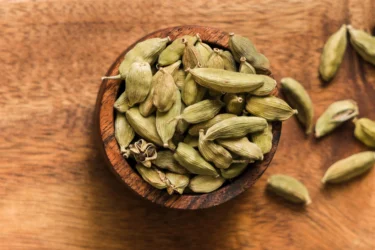
Elaichi is known as one of the best remedies for managing bad breath. Simply chewing some elaichi seeds helps in removing bad mouth odour9. You can also put some elaichi powder in hot water and use it to gargle. This might help you get rid of bad breath6.
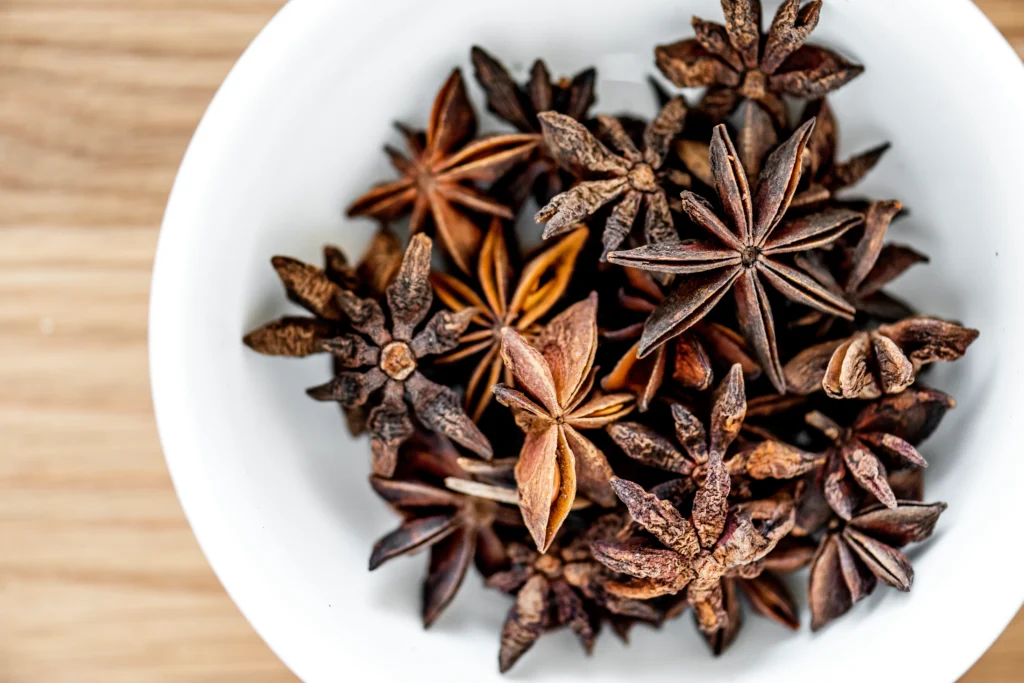
Star anise is used as a natural breath freshener and helps in refreshing the breath10. You can chew the seeds of chakra phool after a meal to refresh your breath6.
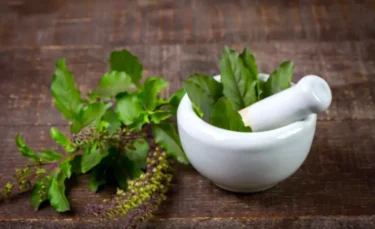
In Ayurveda, it is mentioned that tulsi has several medicinal uses. Chewing some tulsi leaves may help cure infection and ulcers in the mouth. The sun-dried tulsi leaves powder may be used for brushing teeth. It helps remove the foul breath and manage the disorders of gums11.You can chew a few tulsi leaves to get rid of bad breath6.
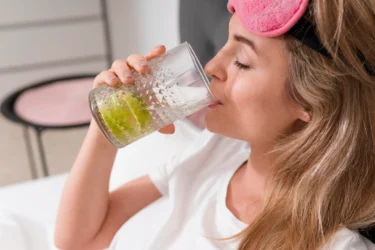
You can also follow these tips to control bad breath:
Also Read: Simple Home Remedies For Swollen Gums
Bad breath that just wouldn’t go away in spite of appropriate oral hygiene may be a warning sign of advanced gum disease Or dental plaques apart from multiple other medical conditions which should ideally be examined by a dentist.
Dr Ashish Bajaj, M.B.B.S, M.D. in Clinical Pharmacology and Toxicology
If you have persistent bad breath, even after following a good dental hygiene routine and preventing your mouth from dryness, you must consult a doctor1.
Also Read: Simple Home Remedies to Help Ease PCOS Symptoms
Due to bad breath, you may feel uncomfortable talking to someone and may lose self-esteem and confidence. However, you can try some of the home remedies such as lavang, yoghurt, paan, saunf, elaichi, tulsi, and chakra phool to deal with your bad breath. You must also follow good oral hygiene practices. However, if you still feel your breath is persistently smelling bad and not improving, you must consult a doctor.
Also Read: Home Remedies For Strep Throat By Dr. Rajeev Singh
Yes, you can use saunf to reduce the foul smell from your mouth. Fennel seeds are known to be beneficial for teeth and help clean teeth. They are commonly used in India for dealing with bad breath7. You can chew some fennel seeds or gargle with warm fennel water6.
Yes, paan is good for breath odours. Paan inhibits bad breath, sweetens the breath, toughens the gums, and protects the teeth8. You can chew some paan after a meal to reduce the bad breath. Also, paan cleans the oral cavity6. Therefore, eating paan might benefit you.
Yes, there are several home remedies such as saunf, elaichi, paan, tulsi, yoghurt, lavang, and star anise that might help you get rid of bad breath4,11.
Elaichi might help in dealing with bad breath. Simply chewing some elaichi seeds helps in removing bad breath9. You can also put some elaichi powder in hot water and use it to gargle. This might help you get rid of bad breath6.
Yes, brushing twice a day and flossing daily might be helpful in preventing bad breath. However, if your bad breath situation is continuously worsening, then in such a case, you must consult your doctor1.
1. Bad Breath (Halitosis) [Internet]. Cleveland Clinic. 2018. p. 1–7. Available from: https://my.clevelandclinic.org/health/symptoms/17771-bad-breath-halitosis
2. Halitosis (Bad Breath) [Internet]. John Hopkins. 2022. Available from: https://www.hopkinsmedicine.org/health/conditions-and-diseases/halitosis-bad-breath
3. Halitosis or bad breath. [Internet]. BetterHealth Channel. 2012. Available from: https://www.betterhealth.vic.gov.au/health/conditionsandtreatments/halitosis-or-bad-breath
4. Put culture in your life and reduce bad breath : Eat yogurt ! [Internet]. INTERNATIONAL & AMERICAN ASSOCIATIONS FOR DENTAL RESEARCH. 2005. Available from: https://www.eurekalert.org/news-releases/800154
5. Verma SK, Garg AK, Singh M, Panwar N, Meena M, Singh C. Evaluation of analgesic activity of Syzygium aromaticum W.S.R. to painful tooth. World Journal of Pharmaceutical Research. 2018;7(5):827-34. DOI:10.20959/wjpr20185-11212. Available from : https://www.researchgate.net/publication/357766992_EVALUATION_OF_ANALGESIC_ACTIVITY_OF_SYZYGIUM_AROMATICUM_WSR_TO_PAINFUL_TOOTH_Corresponding_Author
6. AYUSH Division, Head Quarters, Employees’ State Insurance Corporation, New Delhi. Ayurveda Offering Herbal Healing [Internet]. [place unknown]: AYUSH Division; [date unknown] [cited 2025 Sep 17]. Available from: https://agritech.tnau.ac.in/horticulture/pdf/Aayush_AyurvedaOffering_HerbalHealing.pdf
7. Sterer N, Rosenberg M. Breath Odors [Internet]. Cham: Springer International Publishing; 2020. Available from: http://link.springer.com/10.1007/978-3-030-44731-1
8. Fazal F, Mane PP, Rai MP, Thilakchand KR, Bhat HP, Kamble PS, et al. The phytochemistry, traditional uses and pharmacology of Piper Betel. linn (Betel Leaf): A pan-asiatic medicinal plant. Chin J Integr Med [Internet]. 2014 Aug 26; Available from: http://link.springer.com/10.1007/s11655-013-1334-1
9. Jesylne P, Soundarajan S, Murthykumar K, Meenakshi M. The Role of Cardamom Oil in Oral Health: A Short Review. Res J Pharm Technol. 2016 Mar;9(3):272. doi:10.5958/0974-360X.2016.00050.0. Available from: https://www.researchgate.net/publication/301508760_The_Role_of_Cardamom_Oil_in_Oral_Health_A_Short_Review
10. Shahrajabian MH, Sun W, Cheng Q. Chinese star anise and anise, magic herbs in traditional Chinese medicine and modern pharmaceutical science. Asian J Med Biol Res [Internet]. 2019 Oct 15;5(3):162–79. Available from: https://www.banglajol.info/index.php/AJMBR/article/view/43584
11. Sharma K, Acharya S, Verma E, Singhal D, Singla N. Efficacy of chlorhexidine, hydrogen peroxide and tulsi extract mouthwash in reducing halitosis using spectrophotometric analysis: A randomized controlled trial. J Clin Exp Dent [Internet]. 2019;11(5):e457–63. Available from: http://www.medicinaoral.com/medoralfree01/aop/55523.pdf
Disclaimer: The information provided here is for educational/awareness purposes only and is not intended to be a substitute for medical treatment by a healthcare professional and should not be relied upon to diagnose or treat any medical condition. The reader should consult a registered medical practitioner to determine the appropriateness of the information and before consuming any medication. PharmEasy does not provide any guarantee or warranty (express or implied) regarding the accuracy, adequacy, completeness, legality, reliability or usefulness of the information; and disclaims any liability arising thereof.
Links and product recommendations in the information provided here are advertisements of third-party products available on the website. PharmEasy does not make any representation on the accuracy or suitability of such products/services. Advertisements do not influence the editorial decisions or content. The information in this blog is subject to change without notice. The authors and administrators reserve the right to modify, add, or remove content without notification. It is your responsibility to review this disclaimer regularly for any changes.
As we grow older, all the organs of the body begin to age and start showing signs of aging. This includes our skin too, which is the largest organ of our body. Though all parts of our body age, it is the aging of the skin that gains maximum attention because it is clearly visible. We always seek out different ways to delay this visible skin again[1].
Aging skin, especially on the face, affects self-image and has many social and emotional implications[2]. The signs of aging skin are clearly visible, like wrinkling, sagging, and a blotchy, uneven skin tone[3].
There are many reasons why skin becomes saggy as we age. These reasons may be internal (Intrinsic aging) or external (Extrinsic aging)[2].
Intrinsic aging develops over the years as time passes. The speed at which intrinsic aging occurs can vary from one individual to another. Let’s see what exactly happens in intrinsic aging[2].
Extrinsic aging happens due to the external factors as follows[3]:
Several natural home remedies that can help firm up loose skin are as follows:
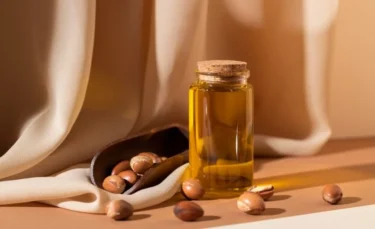
Traditionally, Argan oil has been used in hair and skin care products. It helps improve skin hydration and elasticity, thus giving the skin a young and supple look[7].
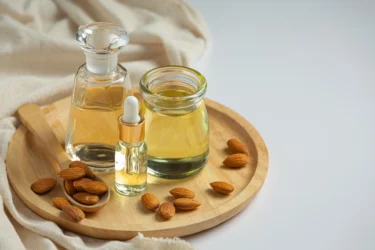
Almond oil softens the skin and helps improve skin tone and complexion. It also helps prevent skin damage caused by UV radiation, which is one of the most important causes of extrinsic aging.
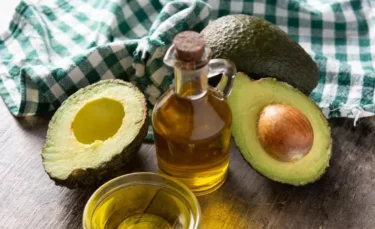
Avocado oil is known to increase the production of collagen, the main component that helps maintain the tightness of skin, thus preventing sagging and loose skin[9].
In addition to oils, there are certain natural ingredients that may offer mild skin-firming effects, though results can vary and are usually temporary.
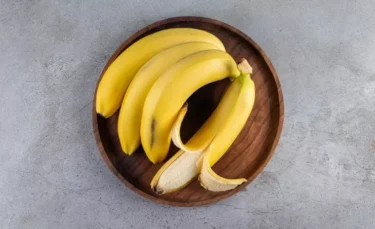
Bananas are rich in potassium, vitamins, and natural oils. They may help reduce the appearance of wrinkles, preventing a saggy look.
How to use it?
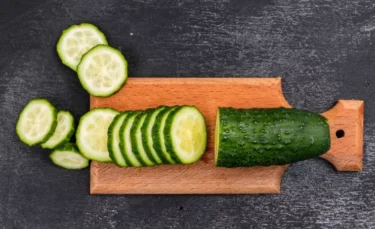
Cucumber helps retain elastin and hyaluronic acid, which are necessary to maintain firm skin[8].
How to use it?
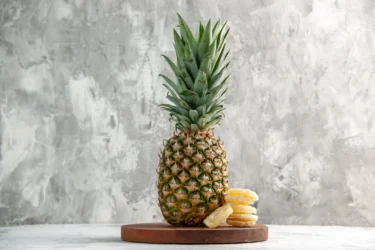
Pineapple contains a range of ingredients, including an enzyme that not only helps improve skin elasticity but also removes dead and damaged skin cells. It also enhances skin hydration, contributing towards giving a clear look to the skin[10].
How to use it?

The gel found in an aloe vera leaf tightens the skin by improving its elasticity. It also stimulates collagen and hyaluronic acid production, thus preventing wrinkles[11].
How to use it?
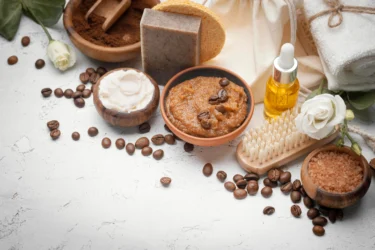
Coffee contains caffeine, which helps protect the skin from aging due to oxidative stress[12].
How to use it?

Honey helps in the detoxification of the skin. It also helps improve skin elasticity and smooths out wrinkles[13].
How to use it?
Also Read: Best Home Remedies For Smelly Armpits
Also Read: White Patches On Skin: Causes, Symptoms And Home Remedies
With these tips and simple home remedies, there’s no need to rely on artificial or expensive cosmetics to manage saggy skin. Just take a look in your kitchen, and you’ll find fresh, natural ways to keep your skin smooth and supple!
Also Read: Beauty Benefits of Using Ice Cubes On The Skin
While surgery for sagging skin (‘surgical lift ‘) can give the most radical results, one might not be the ideal candidate for it. For example, skin tightening procedures are not recommended for expecting mothers, people on certain medications and if someone has skin infection. Consult a skin specialist to know if you can go for surgery for sagging skin.
There are no scientific studies available which show that the effect of skin tightening by home remedies is permanent. However, since there are no side effects, if you see results, you can continue them regularly.
Yes, you may opt for commercially available skin-tightening lotions and creams or for non-invasive skin-firming procedures like laser treatment, ultrasound or radiofrequency after consulting a skin specialist.
Yes, to be cautious about not breaking out into an allergy due to any of the remedies mentioned here, you may ask your doctor to conduct a skin patch test for you. The skin patch test is a simple, non-invasive test that can detect allergic reactions to any substance1[16].
Disclaimer: The information provided here is for educational/awareness purposes only and is not intended to be a substitute for medical treatment by a healthcare professional and should not be relied upon to diagnose or treat any medical condition. The reader should consult a registered medical practitioner to determine the appropriateness of the information and before consuming any medication. PharmEasy does not provide any guarantee or warranty (express or implied) regarding the accuracy, adequacy, completeness, legality, reliability or usefulness of the information; and disclaims any liability arising thereof.
Gel-like collections of blood that form in our veins or arteries are known as blood clots. The blood changes its form, going from liquid to partially solid, jelly-like. Clotting is a normal body function that helps the body from excessive blood loss when we suffer from injuries or wounds. Nevertheless, when these blood clots are formed in places where they do not get dissolved, or on their own, they can cause serious threats to your health1.
A blood clot is usually initiated as a response to a wound on a blood vessel. An unwanted blood clot is called a thrombus. When a blood clot is stationary it is called thrombosis, while when this blood clot moves through the body, it is identified as a dangerous condition called thromboembolism or embolism. Blood clots can form both in the arteries (arterial clots) or the veins (venous clots).
Knowledge of your condition and the risk factors involved may help you identify and prevent this potentially life-threatening condition.
Did you know?
There can be several reasons for blood clot formation. You may also get a blood clot if you2:
Symptoms of blood clots may depend on its location in your body. Some people may experience no symptoms at all.
Read along further for a few home remedies for blood clot treatment for you to try at home. You must always consult your doctorbefore trying any of these on your own. Please note these might give momentary relief and not treat your clot permanently.
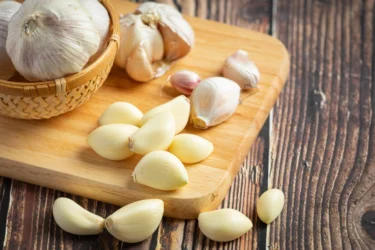
Garlic is known as an effective anti-coagulant food as it might prevent clotting of blood3. Garlic might help in blood thinning and reduces blood clot formation in the arteries. It further might help to prevent atherosclerosis. You may eat a few raw garlic cloves on an empty stomach in the morning.

Brahmi has been traditionally used since long in both traditional Ayurvedic and Chinese medicine. It may help prevent formation of blood clots4. Bramhi can be consumed in the form of herbal juice, tea and powder at bed time for benefits.

Tulsi has been used since ancient times to cure vascular diseases (disease that affects your circulatory system ) & other conditions. Tulsi extract has shown moderate to good activity in studies5 for breaking down clots. Since the preliminary studies make this claim, you must consult your doctor before using tulsi to manage blood clots. You can chew fresh tulsi leaves or drink tulsi tea for its benefits. You can prepare tulsi tea by boiling fresh or dried tulsi leaves in some water and straining the leaves.

Turmeric extract has shown its benefits in dissolving blood clots in some studies5. Further studies are required to confirm this property of turmeric, therefore one must consult their doctor before using it to manage blood clots at home. You can add turmeric to food items like curries and soups or add it to hot water to make tea. You may also have turmeric by adding it to a glass of warm milk and consuming it immediately.

Neem extract was studied5 and found effective as it demonstrated good or moderate clot-breaking activity. To experience the benefits of neem, you can consume neem leaf extract or neem tablets.
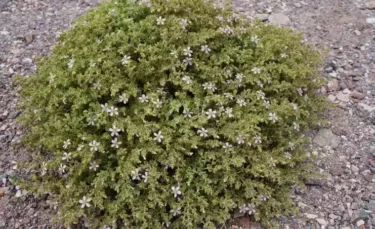
Dhamasa has been studied6 in vitro to possess thrombolytic properties that may dissolve blood clots. The best way to have fagonia or dhamasa powder is to mix it with heated desi ghee and consume it immediately.
You can prevent blood clots by following the simple measures given below:
Do not neglect any symptoms associated with blood clots, as they can pose a life-threatening risk. Increased clotting time, elevated platelet levels, fluctuating blood pressure and abnormal coagulation profiles serve as indicators that aid in recognizing the potential for clotting. Seek immediate medical attention for accurate diagnosis and effective management of such conditions.
Dr. Arpit Verma, MBBS, MD (Pharmacology)
Also Read: Natural Home Remedies for Tooth Decay
In case you suspect a blood clot, you should call your doctor right away. You should seek immediate medical attention if any blood clots form in your veins (venous clots) or arteries (arterial clots) as it can be very dangerous.
Also Read: Natural Blood Thinners: Benefits, Risks, and Precautions
Generally, a blood clot forms in response to an injury on a blood vessel. The formation of an unwanted blood clot needs to be attended immediately as it may be a serious condition. Symptoms of a blood clot depends on the place where the clot is formed while in some people the clot may not exhibit any symptoms. Natural remedies for blood clots can help you get relief from the condition and knowledge of the risks behind the condition will help you make the right decisions. You can also help yourself by keeping active and following your doctor’s suggestions and making necessary lifestyle changes.
Also Read: The Best Home Remedies For Hernia
Yes, blood clots are a life-threatening medical condition. In the condition where blood clots move in the body, also known as embolism, the blood clots formed in the legs, arms, and groin can move to other parts of your body such as lungs leading to pulmonary embolism2. If you suspect a blood clot, rush to the doctor or visit the emergency room right away.
Several home remedies like neem, bramhi, turmeric, garlic, tulsi etc. may help you get some relief from blood clots and may even dissolve the clots4,5, but you should always consult your doctor in case you feel you may have a blood clot as it is a very serious condition and can put your life in danger.
Yes, several lifestyle changes and preventive measures such as wearing compression socks, staying active, raising your legs 6 inches above the level of your heart from time to time, consuming low salt diet, and following the doctor’s advice can help you prevent blood clots2.
Yes, some factors are based on lifestyle choices that make you at higher risks of getting clots, such as smoking cigarettes.
Disclaimer: The information provided here is for educational/awareness purposes only and is not intended to be a substitute for medical treatment by a healthcare professional and should not be relied upon to diagnose or treat any medical condition. The reader should consult a registered medical practitioner to determine the appropriateness of the information and before consuming any medication. PharmEasy does not provide any guarantee or warranty (express or implied) regarding the accuracy, adequacy, completeness, legality, reliability or usefulness of the information; and disclaims any liability arising thereof.
Bleeding gums are a common oral health issue and often an early symptom of gum disease. They mainly occur due to plaque accumulation in the gums. This in turn can lead to inflammation and swelling of the gums known as gingivitis1. When plaque is not removed from the gums, it will harden leading to the formation of a substance called tartar. As a result, there will be increased bleeding and the development of periodontitis (a serious gum infection that affects the soft tissue and bone that anchors the tooth)2.
When gum bleeding is evident during brushing or flossing, it might be ignored thinking it is normal. However, bleeding gums can sometimes indicate a serious underlying medical condition. Sometimes, bleeding gums can occur when you brush your teeth very hard or when you wear ill-fitted dentures. Bleeding gums can be remedied by taking simple measures like maintaining good oral hygiene, consulting the dentist regularly, quitting smoking, and consuming a healthy, well-balanced diet3.
Gum bleeding can occur due to local (oral) problems or systemic (underlying medical conditions) factors.
Local factors include:
Systemic factors include:
Did you know?
While examining your oral cavity, when looking for a cause for bleeding gums, the dentist might find signs like3
These signs can help your dentist diagnose the cause of gum bleeding.
Simple measures can be taken at home to prevent bleeding gums. Some measures include3:
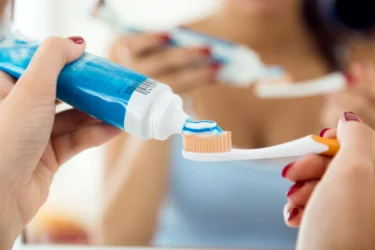
Gum bleeding is a sign of poor oral hygiene. Gums bleed or become swollen when there is plaque accumulation at the gum line. For pregnant women, good oral hygiene is extremely important3.
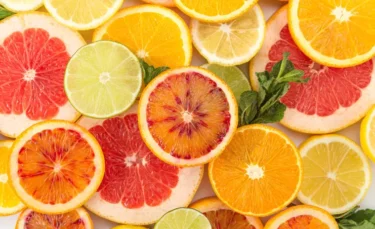
A diet rich in vitamin C can boost the functioning of your immune system. It can also help prevent gum infections that lead to bleeding gums. A deficiency of vitamin C can make your bleeding worse if you have gum disease. Some sources of vitamin C include sweet potatoes, carrots, red peppers, and oranges.
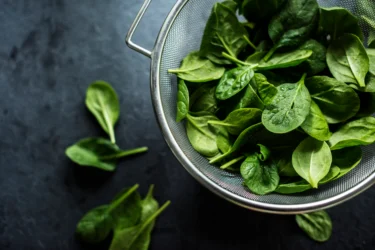
Consuming vitamin K supplements can help relieve bleeding gums. Vitamin K is necessary to make your blood clot. The deficiency of vitamin K can result in easy bleeding. Some sources of food rich in vitamin K that you can easily include in your daily meals are kale, green cabbage, mustard leaves, and spinach3.
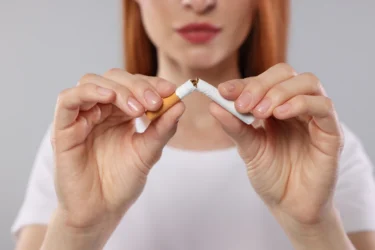
When you smoke, your body’s immune system weakens. This makes it difficult for your body to combat plaque bacteria which leads to gum disease. Quitting smoking can aid in the healing of your gums and the cessation of bleeding.
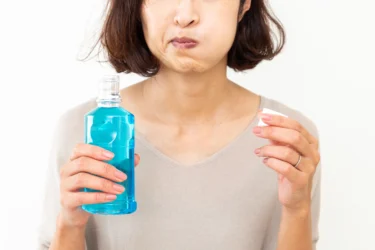
Hydrogen peroxide helps eliminate dental plaque, stops bleeding gums, and also leads to healthy gums. You can rinse your mouth gently with hydrogen peroxide when your gums are bleeding. You must take caution not to swallow the solution.
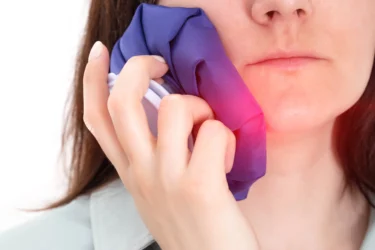
A cold compress when applied at the gum line can control swelling and restrict bleeding. It also helps control inflammation. You can apply an ice pack to your gums several times a day to reduce bleeding3.
Also Read: Home Remedies For Sensitive Teeth By Dr. Rajeev Singh

Having green tea daily can help relieve gum bleeding as it contains a natural antioxidant called catechin. Catechin can decrease the body’s inflammatory reaction to bacteria in the mouth3.
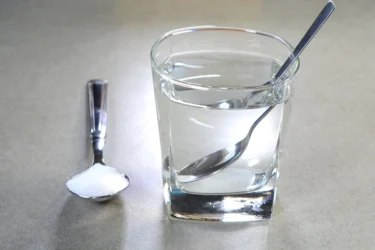
Since gum diseases are caused mainly due to bacterial growth and inflammation in the mouth, rinsing your mouth with warm saltwater daily can help decrease bacteria in the gums and help you get relief from bleeding gums. Add salt to tepid water and rinse your mouth for a few seconds throughout the day at regular intervals to get respite from bleeding gums.
Also Read: Home Remedies For Throat Infection By Dr. Siddharth Gupta
It is essential to visit your dentist if2:
Also Read: Home Remedies For Teeth Whitening By Dr. Siddharth Gupta
Gum bleeding can occur while brushing or even on its own. You will know if you have bleeding gums when you notice a pink tinge in the sink during brushing. This may be associated with swollen or painful gums. Gum bleeding could occur due to many reasons like bleeding disorders, brushing forcefully, improper flossing, hormonal changes during pregnancy, or some vitamin deficiencies. The main reason for bleeding gums is plaque accumulation at the gum line. If proper oral hygiene is not maintained by regular brushing and flossing, there might be tartar formation. Tartar can only be removed by a dental professional. Taking simple home care measures like maintaining good oral hygiene, quitting smoking, using a cold compress, taking vitamin supplements, and visiting your dentist regularly can help prevent gum bleeding and take appropriate remedial measures in time.
Also Read: 12 Natural Remedies For Mouth Ulcers
The soft tissue lining the inner surface of the mouth is referred to as gingiva or gums. Gum bleeding can indicate anything from a minor problem like brushing too hard that can be easily corrected to something much more serious, like diabetes4.
Having a healthy diet comprising of various fresh fruits and vegetables, avoiding eating too much processed foods and foods containing sugars, can help treat bleeding gums3.
Gingivitis (inflamed gums) can result in red, swollen and bleeding gums. This can cause a bad breath4.
Yes, you might present with symptoms like red, swollen or bleeding gums when you have diabetes. Due to high blood glucose levels, there is an increase in glucose in the saliva. When there is an increase in glucose, the bacterial count increases. When bacteria combine with food, there is formation of plaque. When this plaque hardens and develops near your gum line, it can result in gum disease. 6
Disclaimer: The information provided here is for educational/awareness purposes only and is not intended to be a substitute for medical treatment by a healthcare professional and should not be relied upon to diagnose or treat any medical condition. The reader should consult a registered medical practitioner to determine the appropriateness of the information and before consuming any medication. PharmEasy does not provide any guarantee or warranty (express or implied) regarding the accuracy, adequacy, completeness, legality, reliability or usefulness of the information; and disclaims any liability arising thereof.
Links and product recommendations in the information provided here are advertisements of third-party products available on the website. PharmEasy does not make any representation on the accuracy or suitability of such products/services. Advertisements do not influence the editorial decisions or content. The information in this blog is subject to change without notice. The authors and administrators reserve the right to modify, add, or remove content without notification. It is your responsibility to review this disclaimer regularly for any changes.
We commonly hear our beloved elders, be it our grandparents or parents, complain about leg pain. It is not only the elderly who experience this pain; youth can also experience it. Leg pain can be the result of a strenuous exercise routine, overuse of legs, decreased water intake causing dehydration, or due to underlying medical conditions like varicose veins, peripheral nerve damage due to diseases like diabetes, etc., and other such causes. The severity of pain varies with the cause, from moderate to severe, and it can either be continuous or can be sometimes intermittent. Sometimes, the pain comes and goes away quickly (acute) or can last for weeks, months, or even years (chronic)2.
As the causes of leg pain can be wide-ranging, a few categories are listed below:
Over-staining of muscles by excessive exercise and little rest, dehydration and medications (e.g., statins and diuretics)1.
Muscle strain (due to over-stretching of muscle); pain in the front of the leg due to over-use (shin splints); hairline fracture or crack of the bone (stress fractures), and inflammation in tendons of the legs (tendinitis)1.
Deep vein thrombosis (blood clot); nerve damage (seen in people with diabetes, alcoholism, and people who smoke); varicose veins; diseases in which inflammation is seen like arthritis (joint inflammation), cellulitis (soft tissue and skin infection), gout (a form of arthritis) and peripheral artery disease (improper circulation of blood due to narrowing of blood vessels)1.
Sciatica (pain that radiates to the lower leg due to a slipped disc in the back); bone cancer (Ewing sarcoma, osteosarcoma); cancerous tumours of the bone, etc1.
The symptoms of leg pain are:
Some of the other signs that might appear along with leg pain are:
No matter how, what, or why, pain is pain, and what we ultimately want is relief from it. Home remedies are natural products that are found at home, and some of them can be used to relieve leg pain. A few Ayurvedic herbs can also help with leg pain, which are described as follows.
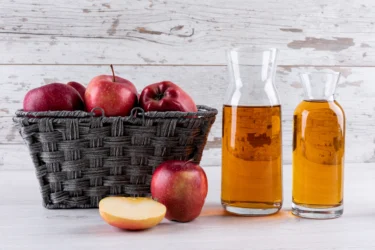
Apple cider vinegar is a commonly used seasoning. It also has therapeutic properties; therefore, it has been used for its medicinal purposes for ages as well. In a study3, it was found that the external application of apple cider vinegar in people with varicosities (also called varicose veins, a common cause of leg pain) leads to a reduction in pain. You can use apple cider vinegar to apply directly onto the leg, or you can mix a little bit of it in water and drink it. You can also add a few drops of apple cider vinegar to a water bath and soak your legs in it.
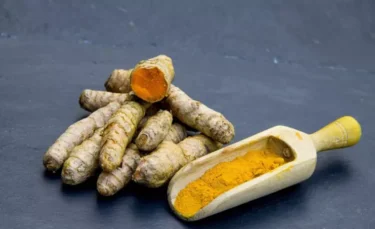
Research4 has shown that turmeric alleviates inflammation (due to its anti-inflammatory properties) and can be used as a medicine for relieving arthritic pain, which is one of the reasons for leg pain. Turmeric is useful for osteoarthritis, which causes pain in the leg, among many other conditions. Thus, turmeric explains its use as a remedy for leg pain. You can make use of it by including it in your diet and consuming it, or by making a semi-solid paste of it and applying it over the leg.
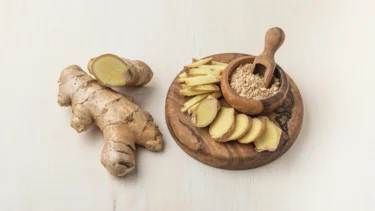
There have been various reports and studies claiming the use of ginger extracts in the management of inflammation caused by osteoarthritis, arthritis, and rheumatism. In a stud5y, it was also found that it helps relieve pain due to general muscular discomfort when consumed as a dietary supplement. Though the exact way in which it acts is still unknown and unclear, a few studies5 have shown that ginger effectively helps reduce pain and swelling due to its anti-inflammatory activity. Therefore, it is used to relieve leg pain. It can be used as an oil and can be applied over the leg, or it can be consumed directly.
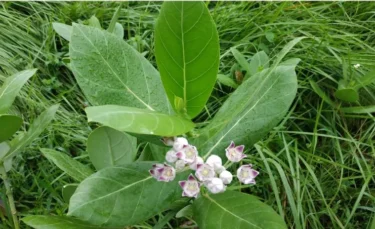
A study6 was devised in order to understand the tribal formulations that have been used for pain relief. In this study, researchers noticed that many of the formulations contained Calotropis gigantea, commonly called Dudh akondo, and most of these were used for rheumatic pain. Calotropis gigantea is usually mixed with other herbs and used for application onto the leg in the form of a paste.
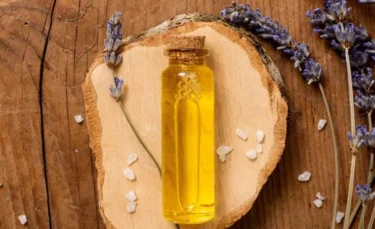
Lavender oil is an essential oil and has been found to have a variety of beneficial effects on our health. It is used to help relieve sudden, short-term pain and also long-term pain and pain of unknown origin. In a study, it was found that massaging the feet of patients with lavender oil admitted to the intensive care unit (ICU) can have various beneficial effects, including the reduction of pain7. Thus, it can also be used to help relieve leg pain. You can also use lavender oil to massage your feet by diluting it in another oil.
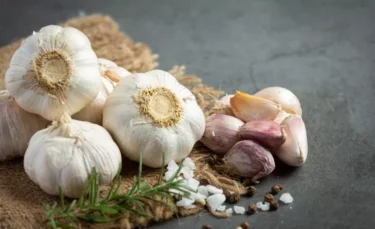
Garlic consists of a bioactive compound called allicin, among others, which is mainly responsible for the medicinal properties of garlic. A few studies8 conducted showed a decrease in joint pain after the consumption of garlic. This alleviation of pain may be due to its anti-inflammatory activity. Joint pain can be the reason for leg pain; thus, garlic can be used to help manage leg pain. You can use garlic for leg pain by crushing it and consuming it directly or by crushing it, mixing it in an oil of your choice, and applying it.
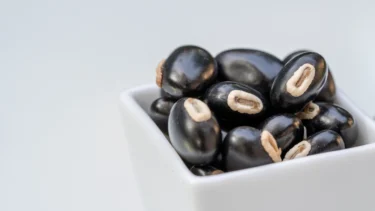
It is a herb used in Ayurvedic medicine. It is commonly known as cowhage or cow-itch in English and Kaunch or Aalukusi in Hindi. It is mainly used in the management of Parkinson’s disease and other nerve-related problems9. In Ayurveda, it is also used to deal with sciatica (pain in the legs caused due to nerves getting trapped between vertebral discs). A bit of its root powder is mixed with water, boiled, and reduced. This decoction is filtered and used for consumption to help relieve leg pain due to sciatica10.
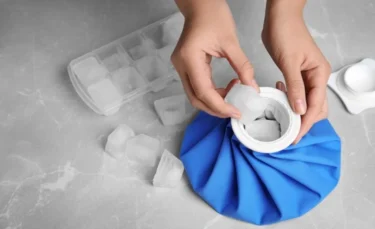
It is an abbreviation for Rest, Ice, Compression, Elevation, and Referral. This method is effective in helping reduce sudden leg pain due to an injury. Simply put, it means to rest the leg; put ice on it by using an ice pack or frozen peas; compress the area by applying a firm bandage; keep the leg raised above the hip for some time, and refer to a doctor as soon as possible2.
Also Read: How to Clear a Stuffy Nose with Home Remedies
It is necessary to seek medical help under the following circumstances:
Also Read: Natural Home Remedies for Swollen Legs
No matter what your age is, leg pain can be very uncomfortable. A variety of reasons can cause this pain, such as over-straining the muscles of the leg, injury, and underlying medical conditions. It can occur for a short time or longer, and it can be less severe or more severe. What really matters is the solution to this pain. A few home remedies like turmeric, ginger, lavender oil, etc., can be helpful in relieving leg pain. You can try a few or all of the remedies that we have mentioned and see what suits you the best. If you notice anything unusual, like swelling, redness, fever, etc., kindly seek medical help at the earliest.
Also Read: Natural Home Remedies for Ear Pain
Yes, you might experience leg pain when you injure yourself, do not drink enough water, exercise for too long, and also if you strain a muscle (due to over-stretching), etc1.
Even though it is rare, there are chances for leg pain to be caused due to cancer of the bones (Ewing sarcoma, osteosarcoma)1. However, a more appropriate diagnosis can be made by your doctor. So, consult your doctor to be absolutely sure.
Yes, diabetes causes damage to the nerves, which might lead to leg pain1.
Yes, essential oils, especially lavender oil, have pain-relieving activity and can be used for leg pain7.
No, there have been no reports documented regarding the association of leg pain with memory loss.
Disclaimer: The information provided here is for educational/awareness purposes only and is not intended to be a substitute for medical treatment by a healthcare professional and should not be relied upon to diagnose or treat any medical condition. The reader should consult a registered medical practitioner to determine the appropriateness of the information before consuming any medication. PharmEasy does not provide any guarantee or warranty (express or implied) regarding the accuracy, adequacy, completeness, legality, reliability or usefulness of the information; and disclaims any liability arising thereof.
Anxiety is often described as the feeling of constant worry that prevents an individual from relaxing. From the point of view of evolution, anxiety is a normal emotion as it has helped humans avoid dangerous situations and eventually adapt, evolve and survive. A thin line exists between this anxiety at the level of just adaptation and distressful morbid anxiety, which requires clinical judgement to diagnose1,2.
The level at which a person experiences anxiety can range from just a fleeting anxiety as one feels before any surgery, to a constant feeling of nervousness that defines an anxiety disorder1.
A person is said to have anxiety disorder when the constant feeling of worry just doesn’t go away. Instead, it gets worse as time passes and interferes with routine life.
Anxiety disorders can be of many types, particularly panic disorders, generalized anxiety disorders and phobias3.
The exact cause of anxiety is not known. But there are many reasons:
Anxiety can be of various types:
While anxiety can manifest in various ways depending on the type, there are certain symptoms which can overlap and are commonly seen in all the types:
Natural remedies for anxiety have fewer side effects than conventional medicines used to treat anxiety. Read along to know about some natural home remedies to combat anxiety5.

Kava is known to be an anxiety reliever since many years. It is a drink that is prepared from the Piper methysticum plant. Though it relives anxiety, it does not cause a sedative effect. But one must exercise caution while consuming it, as liver poisoning is one of its rare, but serious side effects1.
How to use it?
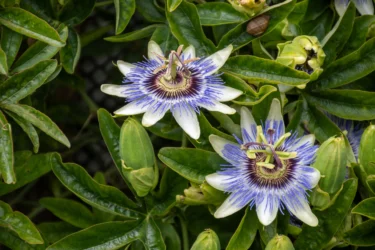
It is commonly known as Passionflower. Its anxiolytic effect is attributed to its aerial sections, that is the flowers, fruit and the bark. It works by modifying the GABA system6. GABA is an amino acid present in our nervous system and is responsible for neural relaxation7. No side effects have been reported on passionflower consumption.
How to use it?

Lavender has been used traditionally to relieve anxiety. It has over 100 active ingredients, but it’s linalool and linalyl acetate that give lavender the anxiolytic quality. Consult your healthcare provider before you consume lavender as research8 also shows that use of lavender has many side effects like throbbing heartbeats, headaches and gastric issues like diarrhoea, stomach upsets, belching and foul breath.
How to use it?
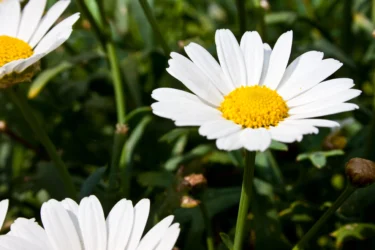
Studies9 have shown chamomile tea to be effective even in cases of generalised anxiety disorder. It is said that the flavonoids present in Chamomile give a calming effect by influencing the transmission of GABA , dopamine, noradrenalin and serotonin or by modifying the hypothalamo-pituitary-adrenal axis in the body, which is integral to the way one reacts to stress10.
How to use it?
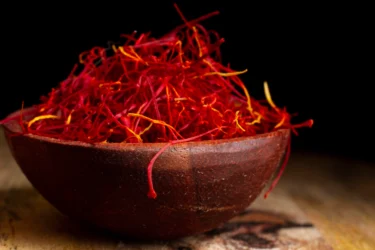
Saffron contains Safranal, the chief bioactive constituent which imparts anxiety relieving properties to saffron. It also gives the saffron its typical fragrance11.
How to use it?
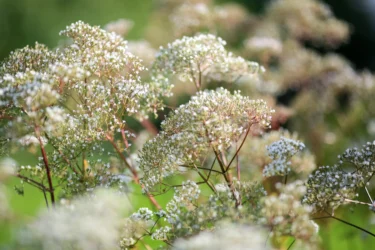
The valerian root has anti-anxiety properties. It contains valerenic acid and valepotriates which imparts anxiolytic and sedative properties to the root12.
How to use it?
Daily intake of Ashwagandha also reduces anxiety and findings14 suggest that high-concentration full-spectrum Ashwagandha root extract improves an individual’s resistance towards stress and thereby improves self-assessed quality of life.
Dr. M.G. Kartheeka, MBBS, MD(Pediatrics)
If you feel your anxiety might be connected to some physical problems, get in touch with your physician who will help you cure the physical issue.
If you experience severe anxiety, seek out a mental health expert who will evaluate your symptoms and treat you accordingly.
Consultation with a psychiatrist, psychologist, management with allopathic medicines, mind body techniques and exercise are well known to help reduce anxiety.
Dr. Ashish Bajaj, M.B.B.S., M.D. in Clinical Pharmacology and Toxicology
Home remedies for anxiety are good nonpharmacological therapies to try out at home. However, one must exercise caution and inform your physician before consuming any of the herbal medicines for anxiety as some of them do cause side effects.
Symptoms of extreme anxiety require treatment by a mental health professional and one must not hesitate to seek help if required.
Yes, lifestyle changes also have a significant impact on anxiety levels. Few things that you can do at home to manage anxiety are:
Get enough sleep
Avoid leisure drugs and alcohol
Stop smoking and cut back on the intake of caffeinated drinks
Learn healthy techniques of managing stress
Have a healthy, balanced diet13
Treatment for anxiety involves both medications and psychotherapy. Depending on your symptoms, a mental health expert may use either one or a combination of both of the above options. Medications involve anxiolytics, sedatives or anti-depressant drugs.
In psychotherapy, you will be working actively along with a professional to manage your anxiety symptoms. Cognitive Behavioural therapy (CBT) is the most effective type of psychotherapy to manage anxiety13.
Your mental health professional will best know what therapies to use to treat your anxiety.
While the risk factors for each type of anxiety disorder are different, there are some risk factors that are common to all types:
Persons who are reserved in nature, especially when meeting strangers or facing an unfamiliar situation.
Distressing incidences in childhood or after growing up.
History of anxiety or other mental issues in the family.
Physical problems like irregular heartbeats or thyroid issues3.
Yes.
Keeping a diary of your symptoms and what provokes your anxiety helps.
Work with your therapist to know all the techniques of managing anxiety and practice them diligently.
Be consistent with your treatment protocol.
Do not hesitate to ask for the support of your friends and family. You may also join any local anxiety support group13.
Disclaimer: The information provided here is for educational/awareness purposes only and is not intended to be a substitute for medical treatment by a healthcare professional and should not be relied upon to diagnose or treat any medical condition. The reader should consult a registered medical practitioner to determine the appropriateness of the information and before consuming any medication. PharmEasy does not provide any guarantee or warranty (express or implied) regarding the accuracy, adequacy, completeness, legality, reliability or usefulness of the information; and disclaims any liability arising thereof.
Links and product recommendations in the information provided here are advertisements of third-party products available on the website. PharmEasy does not make any representation on the accuracy or suitability of such products/services. Advertisements do not influence the editorial decisions or content. The information in this blog is subject to change without notice. The authors and administrators reserve the right to modify, add, or remove content without notification. It is your responsibility to review this disclaimer regularly for any changes.
Whiteheads are small, painless, white or yellow bumps that develop on the surface of the skin. They are also called closed comedones (singular – comedo)1,2. They are a type of acne that commonly occur on the nose, chin, forehead, neck, chest, back and the upper cheek region and arms1,3.
Whiteheads are commonly seen in adolescents, but they can also affect adults4. Milia are chronic whiteheads that form as small white bumps when dead skin cells become trapped in tiny sacs on the skin’s surface1.
Our skin contains hair follicles all over. Around these hair follicles are small glands called sebaceous glands or oil glands. These glands secrete sebum, an oily substance. Normally, the sebum is drained out to the surface of the skin through the hair follicle5. However, when the hair follicle gets blocked, the sebum gets trapped inside. Eventually, the sebaceous gland or the hair follicle become inflamed. The inflammation can be caused by:
Infection of the sebaceous gland by bacteria known as Propionibacterium acnes (Cutibacterium acnes)6.
Did you know that you can use coconut oil to manage whiteheads in addition to using it for your hair and cooking? Yes, investigations have proven that coconut oil has antibacterial characteristics and may inhibit the growth of Propionibacterium acne. This is the bacteria causing whiteheads. As a result, if you have whiteheads, you may apply coconut oil at home15.
Dr. Rajeev Singh, BAMS
Whiteheads are milder forms of acne. They usually appear in areas of the skin that have oily glands in abundance, like the face, upper back and upper chest1,2,3. Whiteheads appear as small yellowish or whitish bumps on the skin. They do not cause any redness, pain, swelling or a sensation of heat as they are non-inflammatory by nature. They also don’t contain pus1.
Managing whiteheads at home does not necessarily require costly treatments. Several natural substances are traditionally used and may help manage whiteheads. These include:
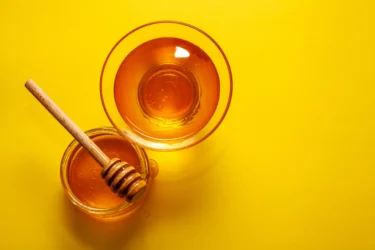
Honey is known to have anti-bacterial properties. It may inhibit the growth of bacteria that cause whiteheads8.
How to use: Take the required quantity of honey in a glass bowl. Add a little water to it so that its consistency is comfortable enough for you to apply to the skin. Apply this to the affected area and keep it on for 15-20 minutes. You can wash it off with lukewarm water.

Aloe vera helps to contract the pores on the skin9. It also has anti-bacterial properties that can help fight whiteheads10.
How to use: Cut off the flat end of an Aloe vera leaf. Then, slit it open vertically to reveal the aloe gel inside. You can scoop out this gel and apply it directly to the skin. Wash it off after 15-20 minutes.

Tea tree oil has anti-microbial properties. It is known to reduce whiteheads on the skin11.
How to use: Take tea tree oil in a bowl and add any carrier oil like coconut, jojoba or olive oil to it and mix thoroughly. With a clean cotton swab, dab this mixture onto the affected part and keep it on for 15-20 minutes. Wash off with lukewarm water and pat dry.
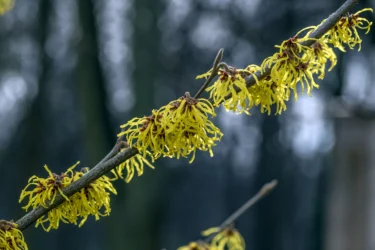
Witch hazel contains tannins that give it an astringent quality (helps the skin cells to contract). It also inhibits the growth of micro-organisms (antiseptic), especially bacteria, and also helps to reduce inflammation due to whiteheads12.
How to use: Take the required quantity of witch hazel solution in a bowl. Dip a clean cotton ball in it and apply to the affected areas. Do not rinse.

Coconut oil has anti-bacterial action against the bacteria causing whiteheads13. Before using it, ensure that the skin is cleansed and dried properly.
How to use: Take the required quantity of coconut oil on your clean hand and massage it thoroughly on the affected skin area. You may leave the oil overnight and then wash it with tepid water on waking up.
Whiteheads are a kind of acne that is caused by the bacteria Propionibacterium acnes. Honey is known to have antibacterial characteristics and studies16 have demonstrated that it may assist in inhibiting the growth of these bacteria and reducing whiteheads. For these reasons, you may use honey for getting rid of whiteheads at home.
Dr. Siddharth Gupta, B.A.M.S, M.D (Ayu)
It may be difficult to avoid whiteheads completely, but some things do help:
Also Read: Natural Home Remedies For Neck Pain
Whiteheads may clear on their own within days to weeks, though this varies from person to person. You can seek medical advice if whiteheads are persistent, severe, or emotionally distressing14. Do inform your doctor of past allergies to any medications.
Whiteheads during adolescence, although not life-threatening, can have a psychological impact on the person as it can affect their self-image. At such times, it is essential to seek help from a doctor, especially if you are experiencing signs of emotional distress or sadness as a result whiteheads5.
Also Read: Natural Home Remedies for Stretch Marks
Whiteheads are small yellowish or whitish eruptions occurring on the skin, especially in areas where there are a lot of oil glands1,4. The sebum trapped inside a hair follicle can cause inflammation of the gland or hair follicle due to bacterial infection, extra sebum production or abnormal development of keratin5. While whiteheads can be hereditary, they are also caused by toxic chemicals or factors that make the sebaceous glands hyperactive, like the onset of puberty1,6,7.
Having whiteheads is a fairly common condition, especially in adolescents. Although not dangerous, whiteheads may have an emotional impact; therefore, you must seek medical help if you are feeling depressed or anxious due to whiteheads4,14.
Honey, aloe vera, tea tree oil, witch hazel and coconut oil are some natural remedies for the management of whiteheads8,13. With these home remedies, you can tackle whiteheads naturally, in the comfort of your home.
Blackheads are called open comedones as the affected skin surface remains open. On the other hand, whiteheads are called closed comedones because the affected skin surface remains closed. Moreover, blackheads appear brown or black in colour, while whiteheads appear whitish or yellow.
No, whiteheads cannot be transmitted from one person to another.
Pressing on the whiteheads is not recommended as trying to extract them can cause infection or inflammation of that part of the skin and may also cause scarring.
While the above-mentioned home remedies have shown beneficial effects for tackling whiteheads, there is not enough scientific evidence to state that their effect is permanent.
Disclaimer: The information provided here is for educational/awareness purposes only and is not intended to be a substitute for medical treatment by a healthcare professional and should not be relied upon to diagnose or treat any medical condition. The reader should consult a registered medical practitioner to determine the appropriateness of the information and before consuming any medication. PharmEasy does not provide any guarantee or warranty (express or implied) regarding the accuracy, adequacy, completeness, legality, reliability or usefulness of the information; and disclaims any liability arising thereof.
Links and product recommendations in the information provided here are advertisements of third-party products available on the website. PharmEasy does not make any representation on the accuracy or suitability of such products/services. Advertisements do not influence the editorial decisions or content. The information in this blog is subject to change without notice. The authors and administrators reserve the right to modify, add, or remove content without notification. It is your responsibility to review this disclaimer regularly for any changes.
Next Page »« Previous Page